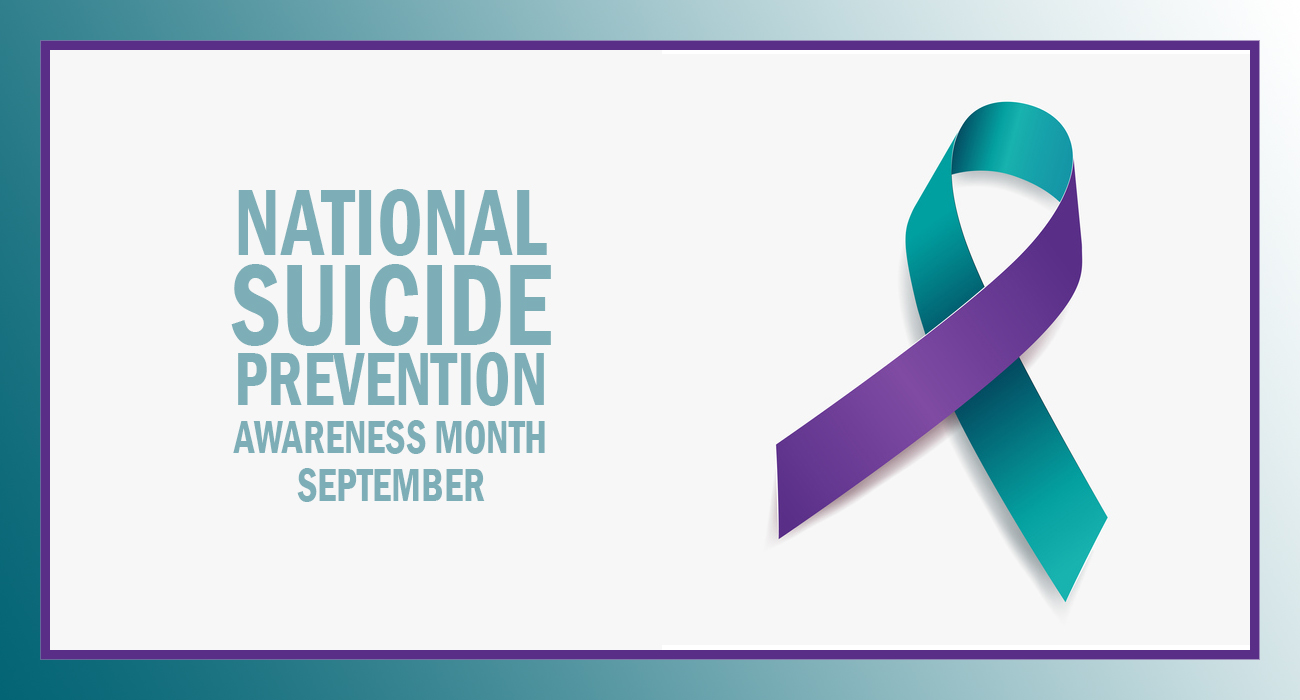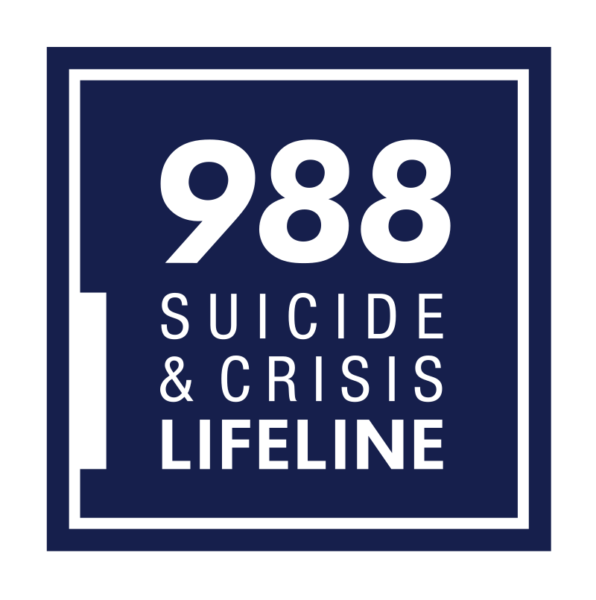Suicide Prevention Awareness: Recognizing Risk in Older Adults

September is Suicide Prevention Awareness Month, an opportunity to discuss this often-stigmatized topic. Let’s use this awareness to spread hope and critical information to people affected by suicide.
Suicide is both a major public health issue and a preventable tragedy. Understanding the reasons someone may consider suicide, recognizing the warning signs, and knowing how to support someone with suicidal thoughts can go a long way in getting the  person who is struggling the help and support they need.
person who is struggling the help and support they need.
The 988 Suicide & Crisis Lifeline was launched this past July. This easy-to-remember, three-digit number connects callers with 24/7 crisis care. Callers can be the person in crisis or a concerned friend, family member, or caregiver. Dialing 988 connects the caller to a trained counselor.
Let’s start with a few facts (courtesy of the National Council on Aging):
- While adults aged 65 and older comprise 12 percent of the U.S. population, they make up 18 percent of suicides.
- Older adults are more likely to plan suicides carefully and use more lethal methods to carry out their plans.
- Suicide attempts are more successful amongst older adults—one in four who attempt it will succeed—compared to one in 200 youth.
- If an older adult fails in a suicide attempt, they are less likely to recover from the effects.
- The highest rates of suicides in our country are men who are 65 and older.
What contributes to higher suicide rates amongst older adults?
- Lack of social connections, loneliness. This may happen as we age, as loved ones and friends pass away. And when family and friends do not live nearby, social isolation and loneliness may result.
- Loss of independence and self-sufficiency. Sometimes we experience losses that make care for ourselves more difficult. Changes in health may comprise a person’s ability to manage household tasks, self-care, driving, mobility. This may cause a loss of identity.
- Financial concerns. Struggles to cover bills, put food on the table, pay for medications can be a challenge, especially if living on a fixed income. Financial stress, combined with grief or health challenges can be a trigger for suicidal thoughts.
- Chronic pain and illness. A change in health or a worsening condition or disability can impact a person’s quality of life. This can result in mobility issues, a challenge to the sense of well-being, and chronic pain which can be difficult to manage.
- Grief from loss of a partner or spouse, other family members, and friends. Some individuals experience anxiety about dying and grapple with their mortality. The losses may exacerbate feelings of hopelessness and loneliness. Family conflict can be a contributor too.
- Cognitive impairment. In a recent study, it was shown that “the risk of suicide attempt was higher in patients with recently diagnosed Mild Cognitive Impairment (MCI) and those with recently diagnosed dementia compared with those without MCI or dementia.” (“Risk of Suicide Attempt in Patients with Recent Diagnosis of Mild Cognitive Impairment or Dementia,” Günak, et al., JAMA, 3/24/2021). Changes in someone’s cognition can increase impulsivity and impacts a person’s judgment or decision-making.
- Clinical depression. Occasionally life’s challenges can lead to depression. Over time it can develop into clinical depression, characterized by long-term feelings of sadness and hopelessness, and often resulting in a loss of interest in what used to bring joy. Having clinical depression does not mean that a person will commit suicide, but it does increase the risk. The pandemic has contributed to an increase in the number of people reporting symptoms of depression.
Know the warning signs of suicide
Recognizing warning signs is an important first step in preventing suicide. An expression of suicidal intent is the most significant indicator. A change in behavior or something out of character may serve as a red flag that an older adult is contemplating self-harm.
Warning signs of suicide include:
- Changes in eating or sleeping patterns
- Engaging in risky or dangerous behaviors; lack of concern for personal safety
- Preoccupation with death
- Substance abuse
- Symptoms associated with depression (as shared earlier), withdrawing from usual activities, low energy, or flat speech
- Feeling hopeless and/or worthless
- Giving away beloved items
- Changing their will, putting their affairs in order, and tying up loose ends
- Asking questions like “When I’m gone, will you take care of my cat?” or remarks such as “This is the last time that you’ll see me” or “I won’t be needing any more appointments” should raise concern.
- Isolating and avoiding social activities they used to enjoy
- Neglecting self-care, personal hygiene, and medical advice
- Stockpiling medications or obtaining other lethal means
- Prior attempts at suicide
- An expression of suicidal intent
How to support someone with suicidal thoughts
If someone is thinking about suicide, here are Five Action Steps outlined by the National Suicide Prevention Lifeline: Ask. Be there. Keep them safe. Help them connect. Follow up. These Five Action Steps are offer clear, evidence-based guidance on how best to support the person who is thinking of or attempting suicide.
PLEASE NOTE: A threat or attempt at suicide is a medical emergency and requires professional help. Contact help as soon as possible. Call the National Suicide Prevention Line at 988 or call 911.
Protecting against suicide risk
We can all benefit from building up our strengths—our “protective factors.” Protective factors help reduce the risk of suicide and include:
- Assessment for physical and mental health, and care addressing any associated issues. It’s especially important to seek support if there are signs of depression. Other issues such as chronic pain or anxiety should be evaluated and treated.
- Social connectedness; connecting with others.
- Cultivating a sense of purpose or meaning.
- Building and nurturing resilience, what Eric B. Larson, MD calls the Three Reservoirs: social, physical, and mental reserves (“Enlightened Aging: Building Resilience for a Long, Active Life,” by Eric B. Larson, MD, and Joan DeClaire, 2017). Larson also addresses additional steps to building resilience as Proactivity (taking charge of your own health and happiness) and Acceptance (knowing change comes with age).
We see it time and again in our care management work: older adults who are engaged in social, creative, educational, religious and/or volunteer activities are more likely to feel connected, purposeful, and live more fulfilling lives.
A senior activity center or community center can be a great place to make lasting, meaningful connections. They often offer opportunities to volunteer, explore intellectual and creative pursuits, and enjoy activities and meals with others, as well as health checks.
Together we can make a difference by recognizing the warning signs of suicide, supporting someone who is having suicidal thoughts, and protecting against suicide risk.
 Contributor Keri Pollock directs marketing and communications for Aging Wisdom, a care management, consultation, and creative engagement practice based in Seattle. She is a member of the Age Friendly Coalition for Seattle and King County and serves on the Advisory Committee of the Frye Art Museum Creative Aging Programs and the Advisory Board for Zinnia TV.
Contributor Keri Pollock directs marketing and communications for Aging Wisdom, a care management, consultation, and creative engagement practice based in Seattle. She is a member of the Age Friendly Coalition for Seattle and King County and serves on the Advisory Committee of the Frye Art Museum Creative Aging Programs and the Advisory Board for Zinnia TV.
This article originally appeared in the September 2022 issue of AgeWise King County.
Suicide Prevention Resources
- 988 Suicide & Crisis Lifeline
- Crisis Connections
- Community Living Connections—Seattle & King County (call toll-free 844-348-5464)
- Navigating a Mental Health Crisis (a National Alliance on Mental Illness—NAMI resource guide)
- Suicide Prevention Awareness Month (National Alliance on Mental Illness—NAMI)
![Aging & Disability Services for Seattle & King County [logo]](https://www.agingkingcounty.org/wp-content/themes/sads/images/seattle-ads-logo.png)